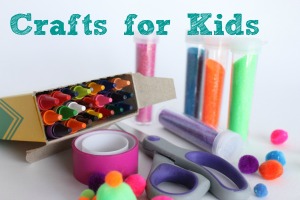
Getting kids to practice healthy habits can be a challenge, especially when daily routines are filled with school runs, screen time, and quick meals. But here’s the good news: parents don’t have to take it on alone. The most effective way to help children build lifelong wellness habits is by adopting them together as a family.
When kids see you prioritizing exercise, choosing nutritious foods, and managing stress in healthy ways, they’re more likely to follow your lead. That’s why the best approach to health and wellness starts at home, with routines and activities that everyone can enjoy. Whether your goal is to eat better, be more active, or spend more quality time together, there are plenty of realistic ways to make it happen.
Let’s explore practical, enjoyable ways you and your kids can develop healthy habits together.
Get Moving as a Family
Physical activity is one of the easiest and most beneficial habits to build as a family. When you make movement fun, it stops feeling like a chore and becomes something everyone can look forward to. The key is to find activities that fit your family’s lifestyle and energy levels.
One great option is biking together. It’s low-impact, gets everyone outside, and gives kids a sense of freedom while promoting coordination and fitness. For longer rides or families with mixed age groups, using a Heybike Electric Bike can make the experience more enjoyable for everyone.
These pedal-assist electric bikes allow parents and kids to keep pace on different terrains without getting overly tired, making it easier to explore parks, trails, or your neighborhood together. It’s a fun and accessible way to stay active, especially for families looking to reduce screen time and add more outdoor adventures into their week.
Consistency matters more than intensity. Even short daily activities like after-dinner walks or weekend park trips can go a long way in building better habits. The more you do it, the more natural it becomes.
Make Healthy Eating a Team Effort
Healthy eating doesn’t have to mean strict diets or complicated recipes. It starts with small choices made consistently, and involving your kids in the process can make all the difference. When children help plan meals, pick out groceries, or prepare dishes, they become more invested in what they eat.

You can start by letting your kids choose fruits or vegetables they’d like to try, then build a simple meal around them. Encourage them to wash, chop (with supervision), or stir ingredients. Even toddlers can help in small ways, like mixing or setting the table.
Creating a balanced meal together also opens the door for learning. Talk about the benefits of different food groups and how they help the body grow and stay energized. Avoid labeling foods as “bad” or “off-limits” instead; focus on balance, variety, and making nutritious choices most of the time.
Snack time is another opportunity to teach smart habits. Keep easy, healthy options like yogurt, cut-up fruits, nuts, and whole-grain crackers on hand. Let kids help prep these snacks in advance so they’re ready when hunger strikes.
Limit Screen Time with Purpose
Screen time can easily take over family routines, especially after a long day when everyone wants to relax. While it’s unrealistic to cut screens out completely, you can set boundaries that promote better balance and open up space for healthier activities.
Start by creating screen-free zones or time blocks like during meals, the first hour after school, or the hour before bed. Use that time to connect as a family, play games, go for a walk, or talk. When you lead by example and put your own devices down, kids are more likely to follow suit.
Offer alternatives to screen-based entertainment that are fun and engaging. Board games, art projects, backyard play, and storytelling can all be exciting when done together. The goal isn’t to eliminate screen time. It’s to make sure it doesn’t replace the activities that contribute to physical, mental, and emotional well-being.
Also, try using tech as a tool for movement. There are plenty of kid-friendly fitness apps, dance videos, and yoga sessions that get the whole family moving while still positively using a screen.
Prioritize Mental and Emotional Health
A healthy lifestyle isn’t just about eating well and staying active. It also includes mental and emotional well-being. Kids, just like adults, experience stress, frustration, and emotional ups and downs. Creating a home environment where those feelings can be shared openly is essential.
Start by making emotional check-ins a normal part of your day. Ask your kids how they’re feeling, not just about school or homework, but about their thoughts, fears, or what made them happy that day. Listen without judgment and validate their emotions, even if you don’t have an immediate solution.
Encourage creative outlets like drawing, journaling, or playing music as ways to express feelings. Quiet time each day can also help everyone decompress, whether it’s through reading, meditating, or just lying down without any distractions.
Introducing mindfulness exercises can be a game-changer. Simple breathing techniques, stretching together, or guided meditations (available in child-friendly formats) help manage stress and teach valuable self-regulation skills.
The most important thing is consistency. When emotional health is openly discussed and supported, kids are better equipped to handle challenges and develop lifelong resilience.
Create a Family Routine That Sticks
Healthy habits don’t form overnight. They’re the result of consistent, repeated actions over time. That’s why having a family routine is so important. A well-structured day brings predictability, helps reduce chaos, and gives kids a sense of security.
Start with a routine that’s realistic for your family’s schedule. Don’t try to cram in too much at once. Begin with a few core elements like a set bedtime, dedicated screen-free time, and an active hour each day. As those habits solidify, you can gradually add more.

Involve your kids in planning the routine. When they have a say in what the schedule looks like, they’re more likely to stick with it. You can even use visual charts or reward systems to track progress and celebrate milestones.
Flexibility is also key. Life gets busy, and routines may need adjusting. That’s okay. What matters most is staying consistent with your core values: health, connection, and quality time as a family.
Creating healthy habits as a family is one of the best investments you can make in your overall well-being. It doesn’t require perfection, fancy equipment, or rigid rules. It’s about finding simple, sustainable ways to move more, eat better, stay emotionally grounded, and enjoy time together.
Start with one or two small changes and build from there. When parents and kids work as a team, healthy living becomes part of the family’s everyday rhythm.
The most important thing? Show up, stay consistent, and have fun with it. The habits you build together today can last a lifetime.
uy


















